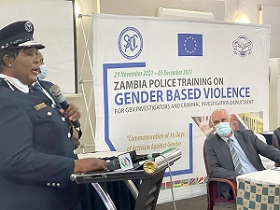
Will artificial intelligence solve some of the pressing issues in Namibian agriculture?

By Helmke Sartorius von Bach.
Artificial intelligence (AI) can be regarded as a promising opportunity to transform agriculture which is considered to have the highest level of risks of all sectors. It is also under pressure to meet increasing demand and to solve global problems.
Thirty years from now, the Namibian population will have doubled, while the surface area of fertile land is declining. Agriculture will remain a mainstay occupation in rural Namibia, implying that farmers will have to do more with less.
Given our arid landwhere farmers struggle with environmental and climate factors, artificial intelligence could make a real difference. Globally, farms supported with reliable technology already demonstrated tangible benefits and productivity gains.
All-over, AI is high on the agenda. In Africa, most governments already adjusted policies towards adoption over usefulness and relevance. Currently more than 60% of African countries are part of Smart Africa; the network that collaborates and shares supportive infrastructure.
Namibia, despite not having signed up, remains committed to become a knowledge-based society by 2030. For that we need to determine how new technological innovation will affect our conventional beliefs and agricultural practices, as AI can awaken unknown data’s true potential.
Artificial intelligence applies the use of sophisticated algorithms to transform raw data into information for efficient decision making. The availability of better information will empower and inspire Namibian citizens across our 14 regions.
Specifically, the use of big data in agriculture will provide farmers with improved and timely reports. They can use for example, their smartphones, drones or robots, to record progress throughout the production season. Collected data then could be accurately analysed, making use of modern cloud-based software to estimate yield potential. Such a system would avail immediate reports (once required) to keep farmers informed. This will allow adjustments for the unforeseen and will minimize agricultural losses.
On the national level, our animal health care officials could use predictive analytics to implement measures for a reduced likelihood of FMD outbreaks or to streamline vaccination campaigns. It would only require the capturing of meaningful information to better measure and improve the livestock health outcomes. Examples would be to analyse and predict outbreaks based on additional information captured through AI, using the existing and functionable NamLITS traceability system. New intelligence could identify gaps to overcome some of our regional issues. An AI system only provides information. For the optimal information the use of the information depends on support infrastructure, such as vehicles, roads, and the logistical infrastructure to achieve agricultural goals.
Another example would be to re-skill our extension officers with different types of advanced methods, such as cloud-based technology and software to provide access to information required for improved advice to farmers. This could result into higher farmers’ productivity. However, the use of data-driven advice will require some adjustments in the capturing of information. Our regular national census would need to adjust their approach and to avail disaggregation of existing national data.
The future is about individual data for our 14 Namibian regions, with options to disaggregate even regional data into area specific information. Technical information, relevant to these specific areas, will provide farmers with ideas on how to improve production and what is required to minimise or to mitigate identified risks. Since AI technology provides immediate access to production information, farmers will be able to reduce their costs and will become more profitable again. However, nothing is for free, the tangible benefits which simplify the lives of farmers in many ways, but will have to be cost as well.
Current AI purposes are to analyse market demand, to manage risks, to analyse genetic enhancements, monitoring soil health, protecting produce against diseases and pests through early treatments, or optimising plant and crop harvesting. These allow for improved farming operations with optimised input allocations and increased farming productivity.
Also, the observed food waste can be reduced. AI offers insights into food production to establish consumers’ confidence in food safety and security. We need to be aware that consumers increasingly will require traceability of the entire food production process. Typically, consumers will read the QR code of the selected food products to select among alternatives. The new generation will not purchase only by quality and price but increasingly they will make use of investigation where and how products were grown, transported, and processed.
Given the challenges faced in Namibian agriculture, access to these improved insights might be the catalyst required for change. This technology will not only analyse information, but it also has the potential to fundamentally enhance rural lives through a number of agriculturally based initiatives.
In Namibia, we should utilize our young and talented population to be capacitated with relevant training. Our forward-thinking society need to be encouraged to determine how to plan our future, inclusive of supporting policies within the ethical framework, local knowledge, values, and beliefs of our citizens. It will require public private partnerships to cover the high acquisition and maintenance costs, inclusive of regular hardware and software updates.
Given these constraints, the benefits of AI in agriculture are undeniable. Smart farming tools and systems can perform various tasks so that farm workers can optimize their operations strategically, but it will require human intelligence. Although unemployment might be regarded as a threat, increased agricultural production will improve to allow additional but different jobs because of economic multiplier effects. The use of digital technologies will be found in all stages of the agricultural supply chains, starting in the automation of production systems, the use of sensors and remote satellite data for improved monitoring of crops, water use, or for product traceability in the complete value chain.
As attractive the possibilities may appear, we need to understand that unlike the use of a tractor, one can’t just buy artificial intelligence for a specific application; it is not tangible. AI consists of a set of technologies that are automated through programming, thus essentially, it can be regarded as a simulation of thinking, based on available technological infrastructure. It will take some time, to completely develop that infrastructure. But by doing so, farmers will be able to build a robust agricultural technology-based ecosystem that will stand the test of time. Artificial intelligence is a waive of technological development with significant economic impact of the same scale as the introduction of mobile telephony or the internet. Countries recognising it earlier will leap forward, those who do not will miss out, but eventually all will have to follow.













































